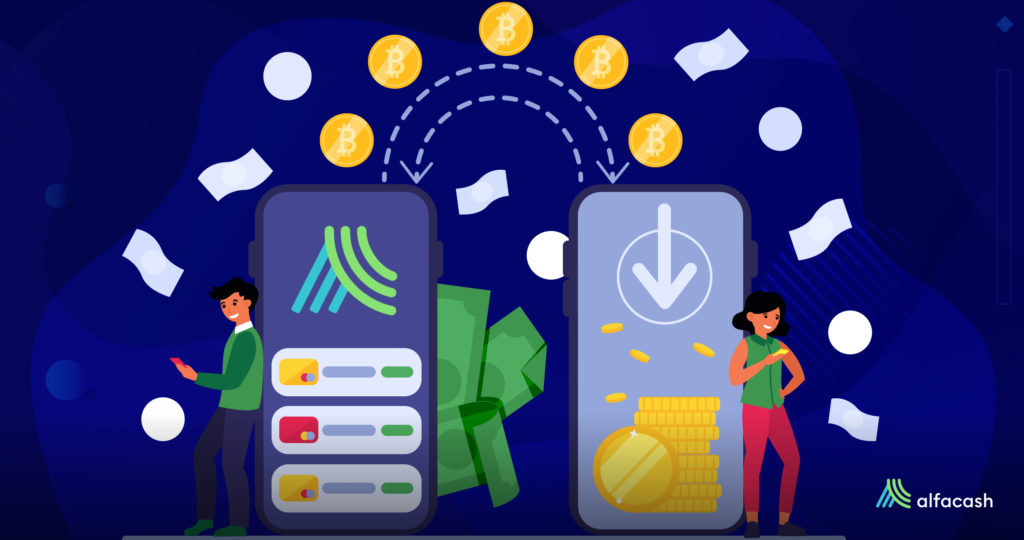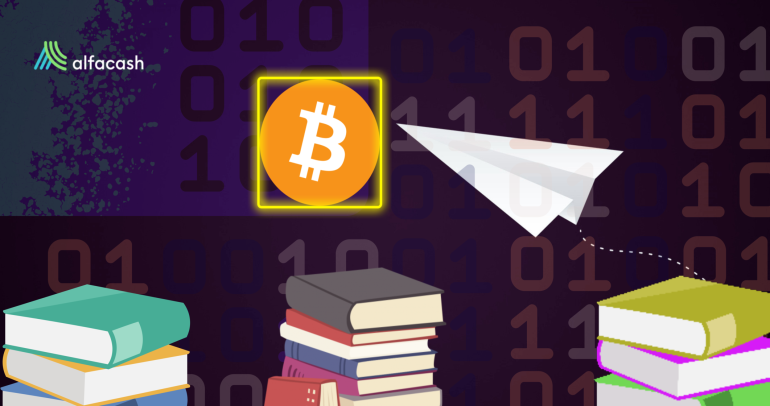Sending money internationally, that’s a remittance in basic terms. A very common case is that of the immigrants sending money to their relatives and loved ones from a country to another. That’s not always easy or cheap with traditional money, but it can be much better to make your remittances with cryptos.
Let’s talk a bit about it, previous to learning how to do it in the easiest way possible.
Issues with traditional remittances
We can start with the expenses: sending money costs more money. According to the World Bank, the average cost for making a $200 remittance is around 7%, using bank account transfers and cash. Alternative and cheaper options don’t fall from 4.8%, though. In concrete numbers, that’d be even $14 for every $200 sent.
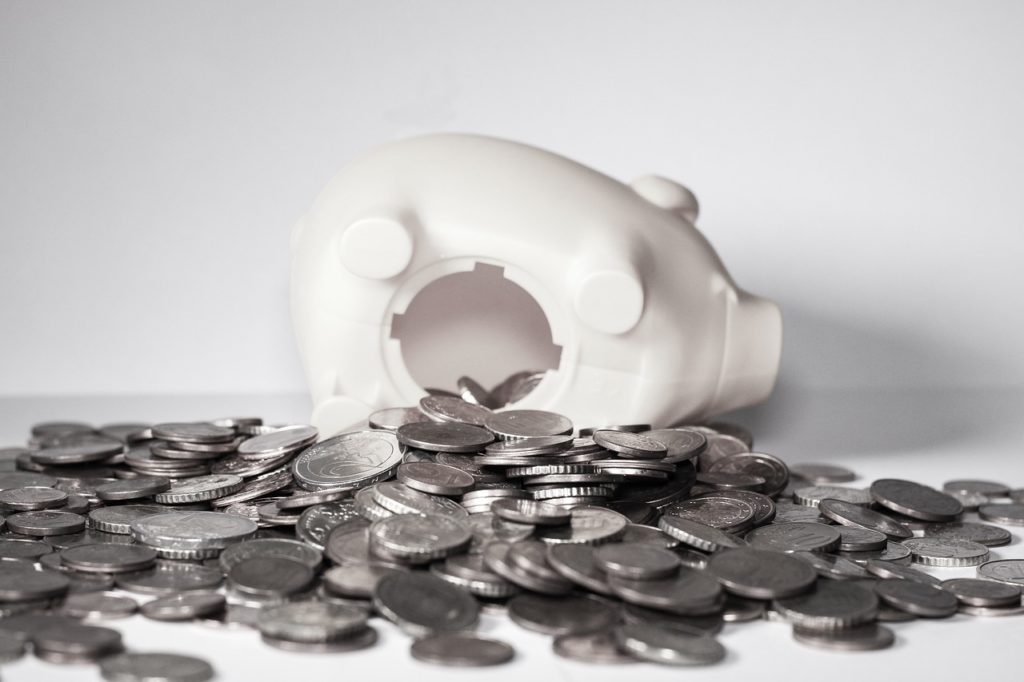
That’s why this organization calculated that “cutting prices by at least 5 percentage points can save up to $16 billion a year”. But that’s not all, because the speed and the requirements are important too for the equation.
These international transactions can take days and even weeks, and not before the sender meets all the requirements and documents requested by the bank or financial service. If they don’t have bank accounts, then the process is even more difficult.
The good news? We can avoid all this just by using cryptos to make remittances, with or without bank accounts.
Remittances in cryptos and bank accounts/cards
If you have a cryptocurrencyA digital currency running on a blockchain and built with cryptography. Contrary to central-bank issued currency, cryptocurrency issuance rules are... More walletA crypto wallet is a user-friendly software or hardware used to manage private keys. There are software wallets for desktop... More with funds, then you can send money everywhere and anytime without the need to meet any requirement or wait longer than just the minutes taken by the transactionA cryptocurrency transaction is an entry on the blockchain ledger, noting sender, receiver and number of coins transacted. More from your device. Of course, we’ll assume that you and your recipient would want to exchange these funds into local money, and that’s also possible in no time with bank accounts and cards.
We can give you a practical example with some easy steps. For the purpose of this guide, we’ll say that we want to send $200 in Bitcoin (BTC) from the United States to Alice, who’s in Germany. The wallet that we’ll use is Exodus Desktop, but you can choose any other as well, even from your mobile.
1. Buy bitcoins with your card or bank account
Open your favorite crypto-exchange (like Alfacash) and go to the section where you can buy BTCAn abbreviation for Bitcoin. (or your selected crypto for the remittance). If you’re already registered, they will usually ask for only how much you want to buy, your payment method (USD credit card in this case), and the addressAn address is a blockchain equivalent to a bank account number in the traditional financial system, or an email address.... More at which you’re going to receive the funds.
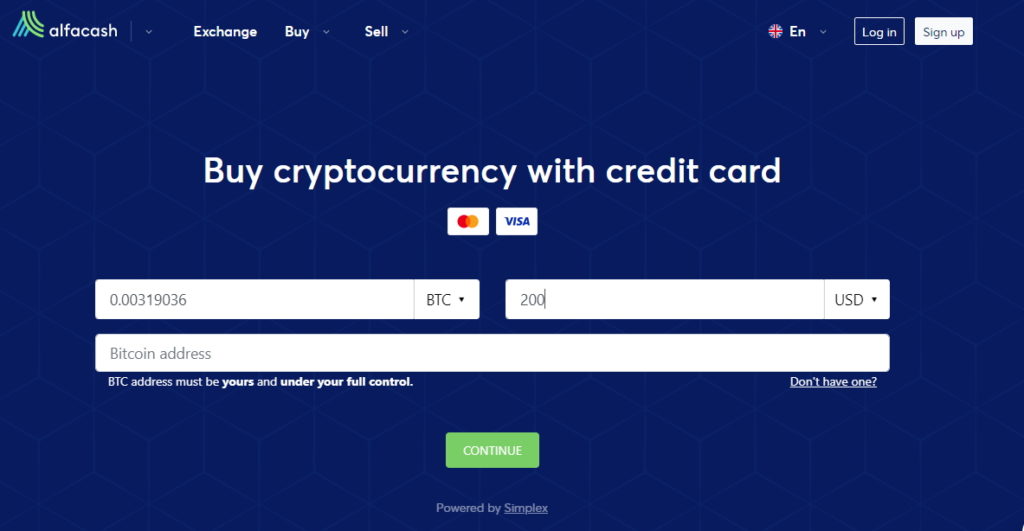
Then, you should open your wallet and click the button “Receive” to find your BitcoinBitcoin is the first decentralized digital currency. It was created in 2009, by an anonymous founder or group of founders... More address. Copy and paste it on the space given for it by the exchange.
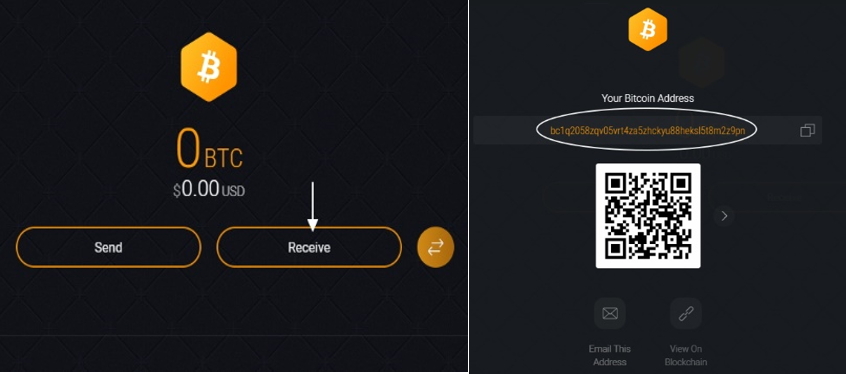
Once you make the accorded payment with the data provided by the exchange, your bitcoins will appear without issue in your wallet.
2. Sending to Alice
Now you have the bitcoins, but they’re meant for Alice. The first thing she needs to do is download a cryptocurrency wallet on her favorite device. Then, she should go to the same button “Receive” to send you her Bitcoin address for catching the remittance.
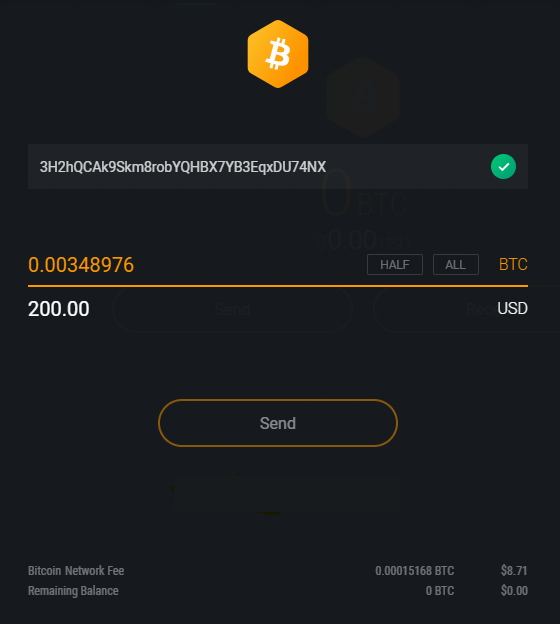
Let’s say is this address: 3H2hQCAk9Skm8robYQHBX7YB3EqxDU74NX [Example address, don’t send your funds here unless you want to donate to The Water Project]. Copy it, and now go to the button or section “Send” in your wallet. You’ll find the right space there to paste the meant address and set the figure you want to send.
Check the address carefully before sending, because the transactions are irreversible and there is some malware out there. Once you click on the button “Send”, that’s it! You can ask Alice to check her wallet.
3. Alice needs local money
Ok, now Alice has $200 in BTC, but she needs some local money. In this case, euros (EUR). She can go then to Alfacash Store and repeat the process you did in the beginning to buy BTC, but upside down. This time, she’ll give $200 in BTC to the exchange and receive the same figure in a SEPA transfer (EUR) to her bank account.

And everything will be done, within minutes and from home. The whole process will cost around or less than $5, depending on the mining fees and the exchange rate for the cryptocurrency at that given moment. If you note that the mining fee is too high at the moment for your chosen crypto, then you can select another one to make the transaction.
You’ll find the mining fee in your wallet when you’re sending the funds. On Exodus, it appears below the main data for the transaction, as “Network Fee”. At the moment of writing, Bitcoin Network Fee is kind of high, so, we could choose another crypto to send the funds from the beginning.
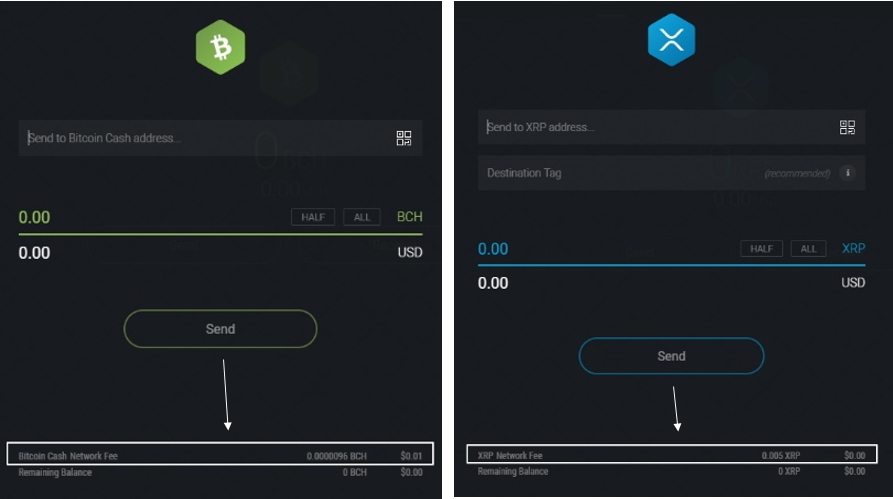
Bitcoin Cash (BCH), for example, has a mining fee of $0.01, and XRP has none. So, the remittance would be a way lot cheaper in these currencies (for now).
Remittances in cryptos without bank accounts
You’ll need to repeat here the steps mentioned above, but with some slight differences. For this purpose, let’s imagine that neither you nor Alice (the remittance recipient) has bank accounts. Still, there are ways to send, spend, and exchange your funds safely. You can still complete your remittances with cryptos easily.
1. Buy cryptos with apps or cash
There are out there a lot of financial apps / digital wallets meant for traditional money, which balance you can top up easily with cash or ATMs. You can use them to buy cryptos in the exchanges that accept this payment method. For example, you’ll find the wallet QIWI for Russian users in Alfacash. In this case, you’ll only need to change your payment method.
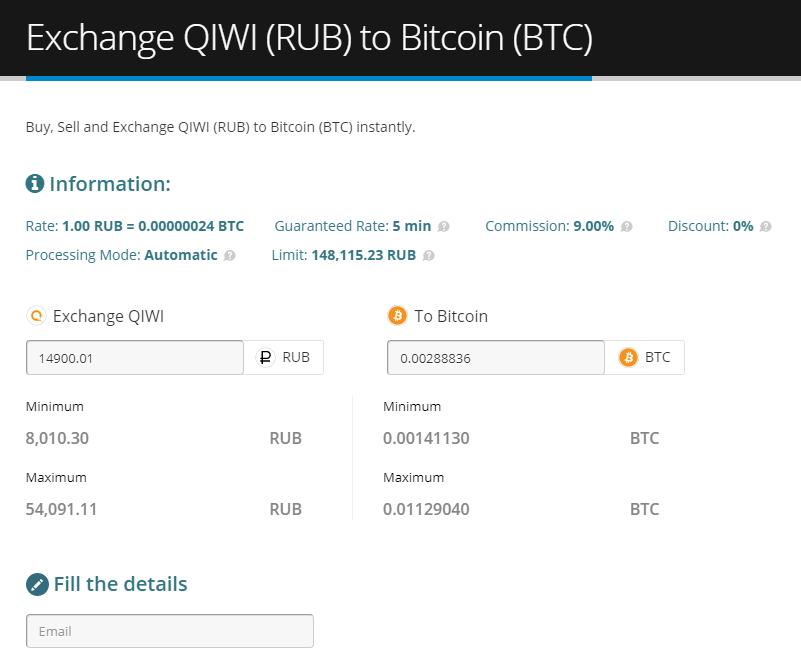
Of course, there are also other options to buy cryptos without bank accounts. If you’re in Spain, for example, you can buy a voucher from Tickebit in a local store. In other places, there’s always trading P2P (person-to-person). You can find some reliable traders in social media groups or P2P exchanges who can have a meeting with you to make a quick exchange.
Another reliable solution is the cryptocurrency ATMs. They are machines specially designed to buy and sell cryptos with cash. You can find over 15,600 ATMs for at least 10 different cryptos in 71 countries at Coin ATM Radar.
2. Sending and exchanging
The step of sending-to-Alice is identical to the one above in this case, so, we can jump to the part where Alice (who doesn’t have a bank account this time) exchanges the bitcoins into local money.
Since she’s in Berlin, Germany, we can try to find a close ATM on the map. It turns out there are at least six crypto ATMs there, so, Alice only needs to pick one and go to the physical address to make the operation in the store. She can check the status, open hours, limits, and fees on the webpage.
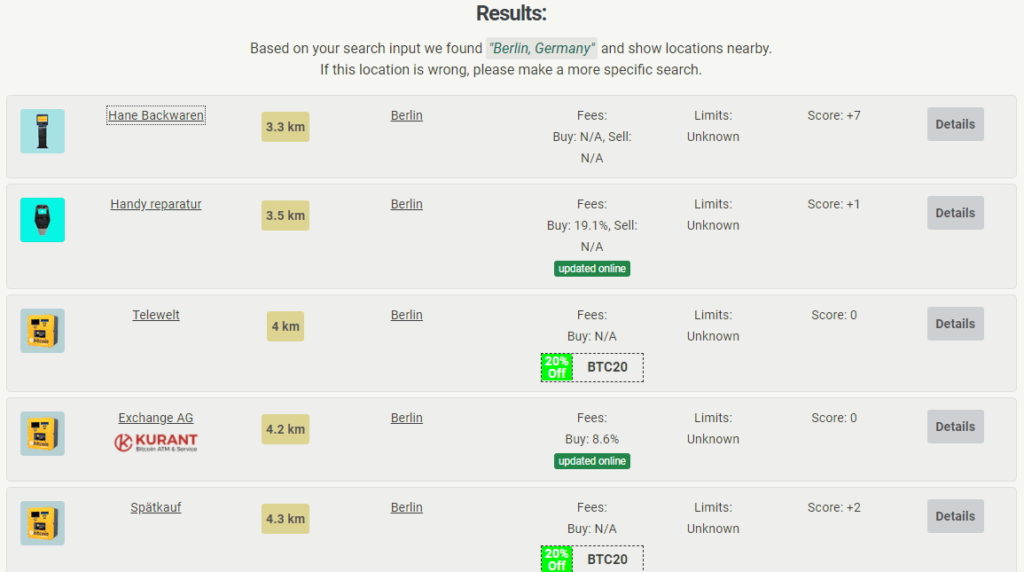
If she chooses, for example, the ATM of Hane Backwaren, she should go there from 10 a.m. to 11 p.m. For withdrawing $200 in EUR, she’ll only need her Bitcoin wallet (on her phone) and not even an ID.
On the other hand, if the ATM fees are deemed high, Alice can also exchange her bitcoins with a P2P trade. And that’s it! Your remittance with cryptos is done, easy, and cheap.
Remember that you can buy and sell 28+ cryptos safely on Alfacash! And not forget we’re talking about this and a lot of other things on our social media.
Twitter * Telegram * Facebook * Instagram * Youtube * Vkontakte
